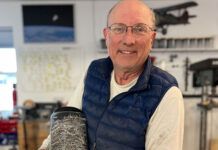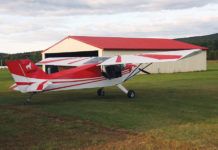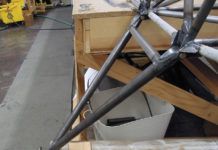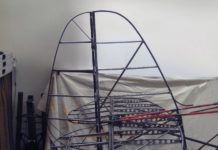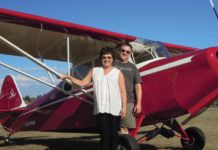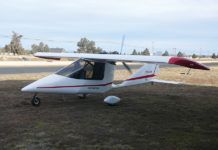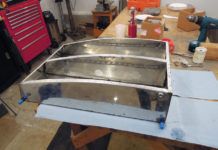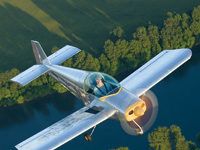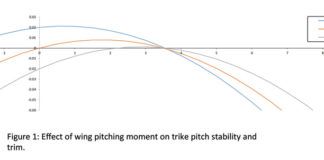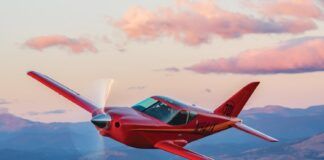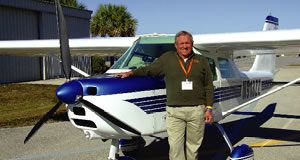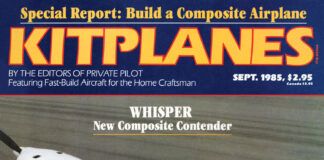John Lawtons Europa XS Construction of N245E began on October 2, 2003, and was completed on April 20, 2006, with a total build time of 2249.5 hours. Cost to build was just under $65K. Inspection occurred on July 1, 2006, and the first flight was made from TN89 on July 7. Handling is crisp but stable, with a real fighter-like feel. A Jabiru 3300 provides climb rates in excess of 1500 fpm and a typical cruise of 142 knots at about 5-gph burn. The prop is a Sensenich carbon two-blade ground adjustable. Engine monitoring is provided by a Grand Rapids EIS with graphical display. Other features include a Garmin 250XL GPSCOM, Garmin transponder and XM plumbed into a Flightcom intercom. Many thanks to Europa Aircraft for an excellent kit and ongoing support during the build, and to Suncoast Sportplanes for its fine firewall-forward package. Id also like to thank Europa Guru Neville Eyre for his ongoing input, Matronics.com for hosting the Europa forum, and the Europa family of builders for their support and encouragement. Thanks also to Fred Dey and Sequatchie Composites, LLC for their guidance during the finish and painting stage, and to everyone else who helped make my lifelong dream come true. Lastly, I would like to give special thanks to my lovely wife and copilot, Susan, for her unwavering patience and support throughout the build. The Europa is a fine touring aircraft and is truly a delight to fly. Bang for the buck, its hard to beat the Europa XS! WHITWELL, TENNESSEE Jim Fillmans Pulsar N623JF took to the skies on August 3, 2005, aft er 2600 hours of building time crammed into nine years. Building houses or airplanes, my motto is, I may be slow but Im not fast. Th e firewall-aft kit came from Aero Designs as a Pulsar 2 just before the design was sold to Skystar. The firewall-forward package from Skystar, along with a few of their modifications, qualifies my plane as a model 2.75. Performance behind the 100-horsepower Rotax 912S and Ivo in-flightadjustable prop is 150 mph burning 5 gph of auto premium. With more than 200 hours logged in the first 16 months, this is no hangar queen. Building was lots of fun, especially the panel and wiring, but the surface preparation almost did me in. The zillion pinholes were filled with PolyFibers SuperFil and UV Smooth Prime. Sikkens two- and three-stage paint was applied by master automobile (but first-time airplane) painter Al Ernst. The purple stripe and the registration number are in honor of my bride, Susan, who encouraged me to fulfill my dream. Photos throughout the building process can be seen at PictureTrail.com/pulsar. A great debt of gratitude goes to two pilot friends, Jack Scheider and John Ferris, who devoted countless hours of hands-on assistance and support. The online Pulsar builder support groups was also always there to help. Thank you Mark Brown for designing such a beautiful aircraft . Keep an eye out at all the local flyins (and some not so local). I plan to make them all.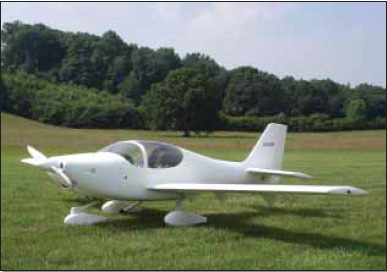
[email protected]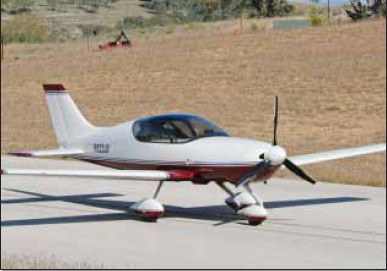
AUSTIN, TEXAS
[email protected]
Jeffry Larsons Sonex
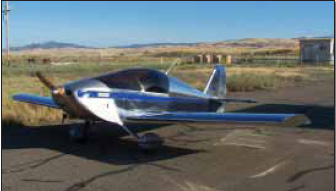
I purchased Sonex No. 206 from a builder in Canada with 27 hours on the Hobbs and a Jabiru 2200 TD, center stick. After import via trailer and U.S. registration, a veteran Sonex pilot flew off the remaining hours and took my instructor for an introduction. After slightly over 2 hours of dual, I was cleared to solo and have logged 30 hours since. Its a great stable taildragger, and I miss my Kitfox Lite less every day, especially when its windy, which doesn’t seem to bother the Sonex. Many thanks to Sonex and a spectacular community of Sonex folks.
TRACY, CALIFORNIA
[email protected]
Randy Pflanzer’s F1 Rocket
IMGCAP(4)]The first flight of N417G occurred in May 2006. After flying for about a year, it went to the paint shop to get a new look. This is my third Experimental completion, having previously completed a Long-EZ and an RV-6. Performance is spectacular with a 260-horsepower Lycoming IO-540. I can easily cruise at 200 KTAS at 10,000 feet, sipping about 10.5 gph through a tuned Airflow Performance fuel-injection system. Many thanks to Mark Frederick at Team Rocket for supporting such a wonderful kit. The entire story of the build process, from setting up shop to getting the airplane painted, can be found on the Internet at
http://www.pflanzer-aviation.com/.INDIANAPOLIS, INDIANA
[email protected]
Dave Ulma’s Ultracruiser

Ive had about 6 hours of dual in J-3 and J-5 cubs and about 2 hours solo. I finally flew my scratch-built UltraCruiser in August 2006. I can tell you that after many months of personal doubt about my flying ability, I did it! Like others on their first flight, I was nervous. The morning of my first flight, I taxied around for awhile and then lined up with Runway 27 Brodhead, prayed for a minute, and then firewalled it. After flying Cubs with slow and muscled responses on the stick, this plane moved with me. It felt not like a barge in the sky, but like a sports car. As I left the ground, I remembered my friend Ted Davis saying, Release some back pressure as you rotate, and I could tell the plane wanted to leap off the grass. So I let `the stick come forward just a bit. I proceeded to make normal, albeit exciting, circuits. I did stay a bit hot on speed with the 40-horsepower Hummel engine but generally kept it at 70 around the patch. I never left the pattern. On one landing I actually was down before I realized it; the smooth landing caught me off guard. Ive found that the UltraCruiser flies and lands much more easily than did the Cubs I flew, and the plane makes me look like I have more experience than I really do.
Lou and SuzanneBello’s GlaStar
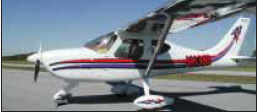
Our GlaStar kit arrived in a big box on June 16, 1998, in Colorado Springs, Colorado. After eight years and a move to Georgia, N638B fi rst flew on June 6, 2006. The first flight was an experience of a lifetime. The airplane flew hands off with level wings needing only a slight right rudder input. Empty weight is 1312 pounds, typically seeing a TAS of 160 mph with 75% power at a density altitude of 5000 feet. Our TMX O-360 A1A engine swings a 72-inch Aero Composite constant-speed prop. The instrument panel is VFR with a Grand Rapids EFIS and EIS. The door is a joint effort by my wife, Suzanne, our son Scott and Evans Graphics Arts Productions of Thomson, Georgia. Many thanks to my friend Cecil Oglesby, who graciously gave me several hours of flying time in his GlaStar prior to my first flight in N638B, and to all the folks on our GlaStar.net web site for their invaluable help during the long build cycle.
LINCOLNTON, GEORGIA
[email protected]
Submissions to Completions should include a typed, double-spaced description (a few paragraphs only-250 words maximum) of the project and the finished aircraft. Also include a good color photograph (prints or 35mm slides are acceptable) of the aircraft that we may keep. Please include a daytime phone number where we can contact you if necessary. Also indicate whether we may publish your address in case other builders would like to contact you. Send submissions to:
Completions, c/o KITPLANES Magazine, 203 Argonne Ave., Suite B105, Long Beach, CA 90803. Digital submissions are also acceptable. Send text and photos to [email protected] with a subject line of Completions. Photos must be high-resolution-300 dpi at a 3 x 5 print size is the minimum requirement.
